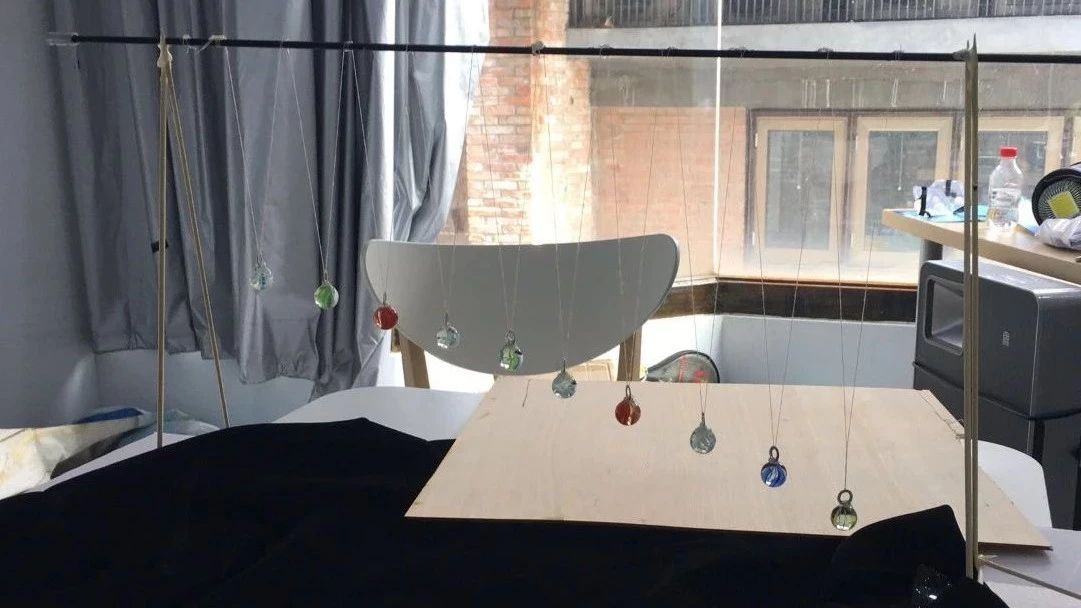
Magic gadget
this is a demonstration gadget that I have loved before. A group of pendulums of different lengths are arranged in a line and swung at the same time, resulting in a periodic change of pendulum from neat arrangement to chaos and then to neat grouping:
(video source: Harvard Natural Sciences Lecture Demonstrations)
Checking our online shopping? We have a huge selection of fabulous cheap long sleeve wedding dresses for you. Start the most wonderful shopping experience from the comfort of your home.
the specific design idea of the snake pendulum is as follows: first determine the length of an overall period, and then determine how many times the longest pendulum should swing during this period of time. Then let each pendulum swing more than the previous one in the same period of time, and calculate the corresponding pendulum length according to the period. Taking the version in the video above as an example, the total period selected here is 60 seconds, the longest first pendulum is designed to wobble 51 times in 60 seconds, the second wobble 52 times, and so on. Through this design, the grouping phenomenon can be observed in the wobble, for example, when the total period is more than half, the ball is neatly divided into two groups: odd and even on both sides. In fact, this is easier to understand. According to the design, each pendulum is placed exactly several times in a total cycle, and the even-numbered pendulum divided by two is still pendulum complete several cycles back to the original position, while the odd-numbered pendulum has only half of the last cycle, just on the other side.
the design of snake pendulum length is actually quite free, and there is even a website with pendulum length calculator (http://www.cs.ubc.ca/~inutard/webapps/pendulumcalc.html), which everyone can make on their own. I also tried to do it myself, and the results are as follows:
the pendulum lengths I use here are: 230mm, 211mm, 196mm, 183mm, 170mm, 159mm, 149mm, 140mm, 131mm, 124mm. This is good for others, stealing laziness. Here the total period is set to 24 seconds, the first pendulum should swing 25 times in the total period, the second 26 times, and so on. The pendulum is a hanging ring glued to the glass ball. I originally intended to put at least 15 pendulums, but then the pole was not long enough and only 10 _ (: pole "∠) _
in the first large cycle of the swing, at least the phenomenon of left and right grouping was relatively clear, but later we can see that the swing has been a bit out of order and can not return to its original state (it is almost impossible to see in the second big cycle. ). I feel that a major problem is that although the pendulum length has been calculated, it is difficult to measure accurately with a ruler, so there are errors in the actual swing period.
(side view, the frame is made of long bamboo sticks, the pendulum is an ordinary line, and all the joints are glued with hot melt glue)
because there is no very long pole to make the frame, so I made a smaller version, but if you want good results, it is recommended that you design the pendulum length a little longer. On the one hand, the influence of the measurement error can become smaller, on the other hand, the longer the pendulum length, the longer the period, so it will not wobble too fast, so it is convenient to observe.
the quality of the pendulum does not affect the swing period, so the material choice of the pendulum is actually relatively free, as long as it is relatively small and heavy, and will not interfere with each other in the swing. I think one of the most convenient options may be a large nut, which can be worn directly on the swing rope. It is also interesting to see that some versions deliberately use things of different quality to show that the cycle is not affected, and it is also interesting to hang keys, mobile phones and other everyday items below.
for more calculation, you can read the original article.
(it's better to have a version made by someone else. I feel like I can stare all day. )